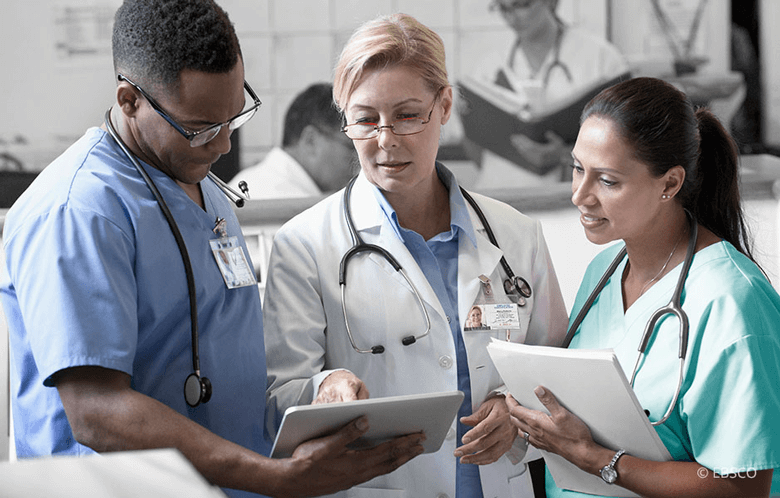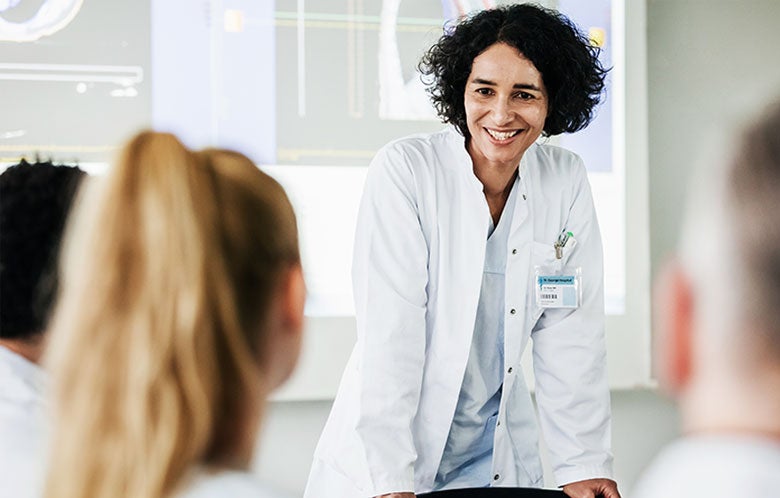For clinical educators, the month of July has special meaning. It is a time of renewal. New residents begin their journeys as physicians and look to clinical educators to shepherd them through the next several years of their training. These formative years of training are critical as they will largely define the way they “think” about medicine, how they treat patients, and how confident and competent they are in their abilities as practicing physicians. The clinical educator can hugely impact the development of a resident in these areas. Here are some tips to maximize resident understanding and lifelong learning.
Modeling is one of the most important aspects in teaching clinical practice. Show learners EVERYTHING you do. From conversations with patients telling them they have cancer, to the way you find the answers to clinical questions, the act of sharing these moments, large or small, will influence how they will approach their patients and practice.
Taking time to watch your learners use their developing skills is equally important. Observation allows the clinical educator to evaluate the process the learner goes through when performing a task, whether it be interviewing a patient, performing an exam, or writing a progress note. Observation allows for real-time opportunities to teach and influence these skills to improve competence and efficiency.
Another important goal for the clinical educator is to teach learners to consider the “logistics” of the care that they prescribe (that is, systems-based practice). For example, it is not uncommon to hear misplaced frustrations about patients who miss appointments or have poor medication adherence. However, learners may have overlooked patient factors such as transportation issues, resources to afford a costly medication, or that a referral for a procedure is not covered by the patient’s insurance. Teaching the “who, what, when, where, why, and how” of patient care is essential for improving the likelihood of success with the treatment plans that are prescribed. This in turn increases both physician and patient satisfaction.
Clinical educators should teach learners how to efficiently use resources such as DynaMed® to maximize skill at finding and interpreting the relevant evidence.
Clinical educators should teach learners how to efficiently use resources such as DynaMed® to maximize skill at finding and interpreting the relevant evidence.
Feedback is another cornerstone of good clinical education. Learners need to know what needs improvement and, equally important, what their strengths are. The most effective feedback is that which is given in a timely fashion. The more remote from the teachable moment, the less impactful the feedback may be. Additionally, providing specific examples which highlight areas for improvement or strength and providing concrete suggestions and actionable items are much more effective than generalities. Finally, it is important to make sure that feedback is provided in a private, safe space to encourage open communication.
With the amount and frequency of new and changing information that is available, teaching the skill of point of care learning cannot be overemphasized. Didactic teaching and the passing of content to learners, while important, is not enough. Residents need to be taught to recognize clinical questions they have at the point of care, which will affect how they go about answering them. Clinical educators should teach learners how to efficiently use resources such as DynaMed® to maximize skill at finding and interpreting the relevant evidence. In doing so, they will be developing effective strategies for life-long learning that incorporate the ever-changing landscape of medical information.
In summary, clinical educators have a great responsibility to their new residents. Being an effective teacher takes time and requires an investment in each learner. Using techniques such as modeling and observation, teaching systems-based practice, providing feedback, and teaching strategies for life-long learning are high-yield tools for enhancing the development of our next generation of clinicians. This, along with a commitment to their professional growth and psychosocial well-being, are what I aspire to each July as I welcome another group of enthusiastic physicians and students into the fold.



